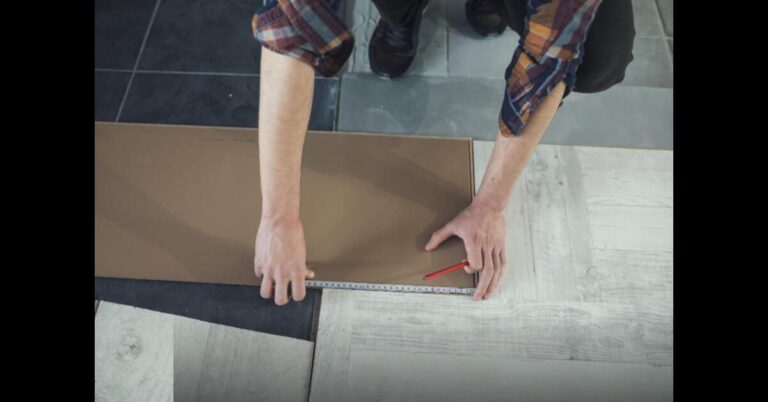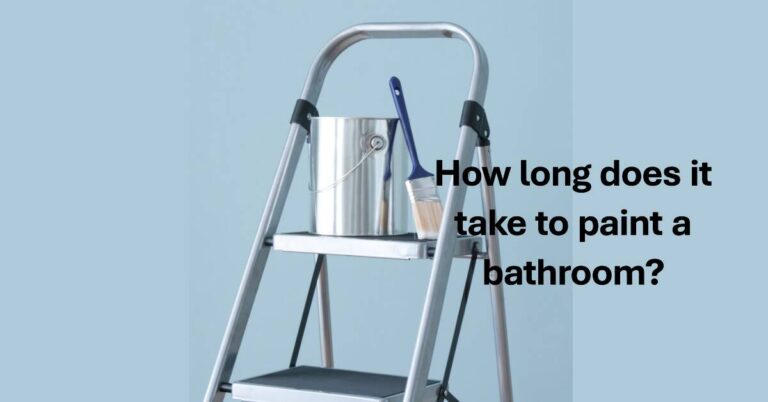Have you ever faced the frustrating situation of having a clogged bathroom drain? You know, when the water in your sink or tub refuses to go down, leaving you with a dirty and smelly mess. According to a survey, 85% of Americans have experienced a clogged drain in their home. It is annoying and can cause health and safety issues, such as mold growth, water damage, and sewer backup.
You’re in luck if you want to avoid calling a plumber and spending a lot of money fixing your bathroom drain. In this article, we’ll show you how to get the bathroom drain out in five easy ways using simple household items or tools. You don’t need any special skills or experience to do it yourself. All you need is some patience and willingness to get your hands dirty.
By the end of this article, you’ll be able to:
- Unclog your bathroom drain using baking soda, vinegar, plunger, snake or auger, chemical drain cleaner, or replacing the drain.
- Save money, time, and hassle by getting the bathroom drain out on your own.
- Prevent future clogs and maintain a clean and efficient drain.
Ready to get started? Let’s dive in!
- What Causes Bathroom Drain Clogs and How to Avoid Them?
- How to Use Baking Soda and Vinegar to Unclog a Bathroom Drain
- How to Use a Plunger to Unclog a Bathroom Drain
- How to Use a Snake or Auger to Unclog a Bathroom Drain
- How to Use Chemical Drain Cleaners to Unclog a Bathroom Drain
- How to Replace a Bathroom Drain And Sink Trap
- Conclusion
- FAQ
- Resources
What Causes Bathroom Drain Clogs and How to Avoid Them?
Before we get into the methods of how to get bathroom drain out, let’s first understand what causes them in the first place. The most common culprits are hair, soap scum, grease, dirt, and other debris accumulating over time in the pipes. These substances form a sticky mass that blocks the water flow and creates a clog.
To prevent clogs from happening, you should follow these simple tips:
- Use a drain stopper or screen to catch hair or debris before they go down.
- Avoid pouring grease, oil, or fat down the drain. They can solidify and stick to the pipes.
- Clean your drain regularly with hot water and vinegar or baking soda. This will help dissolve any buildup and keep your drain fresh and clear.
- Don’t flush anything that doesn’t belong in the drain, such as paper towels, cotton swabs, dental floss, or feminine products. They can cause serious clogs and damage your plumbing system.
However, if you already have a clog in your bathroom drain, don’t worry. There are several ways to get rid of it without calling a plumber. Here are five of them:
How to Use Baking Soda and Vinegar to Unclog a Bathroom Drain
Baking soda and vinegar is one of the easiest and cheapest ways to unclog a bathroom drain. These two ingredients are natural and eco-friendly alternatives to chemical drain cleaners. They create a fizzing reaction that loosens the clog and pushes it down the pipe.
Here’s how to use this method:
- Remove any visible debris from the drain opening.
- Pour half a cup of baking soda down the drain.
- Pour half a cup of white vinegar down the drain.
- Cover the drain with a wet cloth or a plug and let it sit for 15 minutes.
- Remove the cloth or plug and flush the drain with hot water.
Some tips and tricks to make this method more effective are:
- Repeat the process if necessary until the clog is cleared.
- Add some salt or lemon juice to enhance the cleaning power of baking soda and vinegar.
- Use this method once a month as a preventive measure.
How to Use a Plunger to Unclog a Bathroom Drain
Another simple way to unclog a bathroom drain is using a plunger. A plunger is a tool that creates suction that pulls up the clog and dislodges it from the pipe. You probably already have one in your home for unclogging toilets, but you can also use it for sink drains.
Here’s how to use this method:
- Fill the sink with enough water to cover the plunger head.
- Place the plunger over the drain opening and ensure it forms a tight seal.
- Pump the plunger up and down vigorously for about 20 seconds.
- Pull up the plunger and check if the water drains normally.
- Repeat the process if necessary until the clog is cleared.
Some tips and tricks to make this method more effective are:
- Use a flat-bottomed plunger instead of a flanged one for sink drains.
- Apply petroleum jelly around the plunger’s rim to improve the seal.
- Plug any overflow holes or other drains in the sink with wet rags to prevent air escaping.
How to Use a Snake or Auger to Unclog a Bathroom Drain
A snake or auger is a more advanced way to unclog a bathroom drain. A snake or auger is a flexible metal wire with a corkscrew tip that can reach deep into the pipe and break up or pull out the clog. You can buy one at your local hardware store or online for about $10 to $20.
Here’s how to use this method:
- Remove the drain stopper or screen if there is one.
- Insert the snake or auger into the drain opening and push it down until you feel some resistance.
- Rotate the handle of the snake or auger clockwise to hook the clog and pull it up.
- Pull out the snake or auger and dispose of the clog.
- Flush the drain with hot water to clear any remaining debris.
Some tips and tricks to make this method more effective are:
- Choose the right size and type of snake or auger for your drain. A manual is cheaper and easier to use, but an electric one is more powerful and faster.
- Wear gloves and eye protection when using a snake or auger to avoid injuries and infections.
- Be careful not to damage the pipes or the drain with the snake or auger. Do not force it too hard or twist it too much.
How to Use Chemical Drain Cleaners to Unclog a Bathroom Drain
The last resort way to unclog a bathroom drain is using chemical drain cleaners. Chemical drain cleaners are liquids or powders that contain harsh chemicals that dissolve or disintegrate the clog. You can find them at most grocery stores or pharmacies for about $5 to $10.
Here’s how to use this method:
- Read and follow the instructions and warnings on the product label carefully.
- Pour the recommended amount of drain cleaner down the drain slowly and carefully.
- Wait for the specified time for the drain cleaner to work, usually 15 to 30 minutes.
- Flush the drain with hot water to rinse away the drain cleaner and the clog.
Some tips and tricks to make this method more effective are:
- Use chemical drain cleaners only as a last resort, as they can harm your health, pipes, and the environment.
- Choose a drain cleaner suitable for your type of pipe and clog. Some drain cleaners are designed for specific materials, such as plastic, metal, or porcelain, and some are more effective for certain types of clogs, such as hair, grease, or soap scum.
- Ventilate the area well using chemical drain cleaners and avoid inhaling or touching them. Wear gloves, goggles, and a mask for extra protection.
How to Replace a Bathroom Drain And Sink Trap
If none of the above methods work, you may have to replace your bathroom drain and sink trap. This more drastic solution involves removing and installing new plumbing system parts.
You may need basic tools like a wrench, screwdriver, bucket, and plumber’s putty. You can buy new drain flanges and sink traps at your local hardware store or online for about $20 to $40.
Here’s how to use this method:
- Close the water valves under the sink and put a bucket under the pipes.
- Loosen and remove the nuts that connect the trap to the drain and wall. Take out the trap and empty it.
- Unscrew and remove the locknut that holds the drain flange. Lift the flange from the sink.
- Clean and putty the sinkhole. Insert a new flange and press it. Screw a new locknut under the sink. Wipe off the extra putty.
- Connect a new trap to the new drain and wall. Tighten the nuts by hand and wrench. Check for leaks or gaps.
- Open the water valves and test the drain. Fix any leaks if needed.
Some tips and tricks to make this method more effective are:
- Measure your old drain flange and sink trap before buying new ones. Ensure they are compatible with your sink size, shape, and material.
- Take pictures of your old plumbing configuration before removing anything. This will help you remember how everything goes back together.
- If you want to upgrade your faucet and drain assembly simultaneously, follow this guide.
Conclusion
Congratulations! You have successfully learned how to get the bathroom drain out in five easy ways using baking soda and vinegar, a plunger, snake or auger, chemical drain cleaner, or replacing the drain.
You have saved money, time, and hassle by doing it yourself. Not only that, but you have also improved your hygiene, comfort, safety, and water efficiency. Well done!
FAQ
To unclog a shower drain, you can use a plunger, a drain snake, or a baking soda and vinegar solution.
To remove a drain stopper, unscrew the bolt or nut that holds it in place or twist and lift it out.
Some natural ways to clear a drain are boiling water, salt, baking soda, vinegar, or lemon juice.
To install a new drain in a bathroom sink, disconnect the old drain, remove the old putty and gasket, insert the new drain, and reconnect the pipes.
It would be best to clean your bathroom drain at least once a month to prevent clogs and odors.


